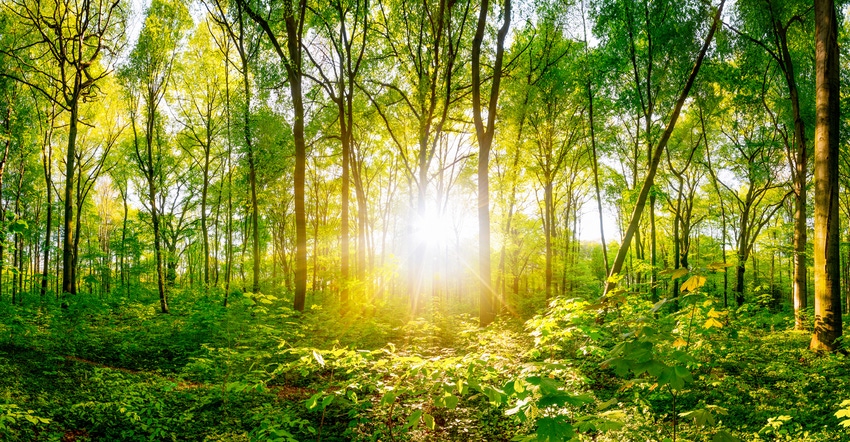November 15, 2017

Winter is a good time to inspect your woodlands for woody invasive plants. There are many kinds of invasive plants out there; many are not native to North America, and they can drastically change the vegetative makeup of woodlands. They do this by outcompeting native tree species, shrubs and wildflowers by producing chemicals that reduce competition, growing space, light, water and nutrients. Just “letting nature run its course” is not always best. Active management of your woodlands is important to ensure you are maximizing all of the benefits your property has to offer.
Here’s a look at several of the more important invasive plants that threaten our woodlands, including their impact on forestlands, plus a few recommended best management practices for invasive plant management.
• Multiflora rose is a bushy shrub with white spring flowers. It arrived from Japan in the late 1880s as a rootstock for cultivated roses and was planted as a living fence to help with soil erosion and provide cover for wildlife. Small fruits (red hips) stay on the plant into winter and are a favorite of birds and other wildlife, which spread the seeds that eventually smother other vegetation. In some states, it is considered a noxious weed.
• Amur and bella bush honeysuckles are native to eastern Asia. Amur honeysuckle grows to 20 feet tall, while bella honeysuckle reaches from 6 to 15 feet. Both species have fragrant flowers in spring and red berries that mature in early fall. Honeysuckle can grow in wet soils but thrives in forest understory. Honeysuckle produces a chemical that inhibits native plants, can spread from seed and competes with native plant pollinators.
• Oriental bittersweet is another woody invasive plant and, like honeysuckle, is native to eastern Asia. Common throughout the Midwest, oriental bittersweet is a vigorous and aggressive vine that smothers vegetation, breaks down branches, causes excessive shading, and can outcompete native American bittersweet.
Best management practices for these invasives include pulling, grubbing or removing individual plants. Make sure to get all of the roots. Prescribed burns can be used in fire-adapted areas. Where possible, replant with native plants including hawthorns, plums ninebark, hazelnut, serviceberry and dogwoods. You can also apply chemical herbicides to the stumps, stems or foliage.
Consult with Illinois agencies, state or national forestry or tree management organizations, and the Midwest Invasive Plant Network forestry associations for details on identification, best management practices, and herbicide recommendations and application.
As you can see, we have a battle on our hands. Invasive plants are good at what they do and can be persistent. To maximize the benefits and productivity of your forest, you need to be deliberate and vigilant in managing invasive plants.
Miller is a horticulture professor at Joliet Junior College and a senior research scientist in entomology at The Morton Arboretum in Lisle, Ill. Email your tree questions to him at [email protected].
About the Author(s)
You May Also Like




